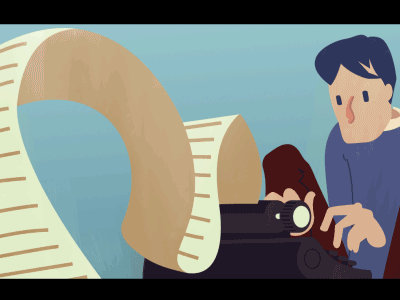Focus Statement Examples to Download
The last thing you want to happen to your write-up is for it to become a messy and confusing one. You want to have a clear and well-defined output. If it doesn’t make sense to your readers, you defeat the main purpose of your write up which is to spread information. You may also see statement examples.
It is not uncommon to have a messy write-up; messy thoughts equals messy output. However, you really have to try to put things into perspective. Allot time to think about what you should write, research and take down notes, make an outline, and other steps you feel are necessary for you to come up with a coherently beautiful output. You may also see need statements.

What is a Focus Statement?
A focus statement, as the name implies, is the main topic of the writing piece. It is the verbal/written expression of the writer of the piece he/she is trying to accomplish. It is usually crafted before the actual writing process begins. You may also see objective statements.
This statement has one precise purpose which is to establish the story’s direction, not only on how it should be written but how it should be delivered as well. It keeps the writer on track of the flow of the story by making sure that he/she is on topic and is able to fulfill the goal of the focus statement. You may also see employee statements.
In a research paper, the focus statement is the hypothesis, while for companies it is a vision statement. It acts as a blueprint of the writing piece; a solid foundation of the whole piece. It dictates to the writer what information to include, and where and how to further expand the topic. You may also see work statements.
Your focus statement should help your readers clearly understand what you are trying to express. Since it is considered as one of the building blocks of good writing, it is a good indication of whether or not your piece is worthy of praise or else you are going to get an apathetic shrug from your readers. You may also see research statements.
Purpose of a Focus Statement
1. It summarizes the story.
- It expresses a concise but complete version of the story’s entire topic.
2. It sets the story’s course.
- It sets the direction of the story as the writer is given a clear blueprint. You may also see teaching statements.
3. It “sells” the story.
- Selling helps the story capture the interest of the readers and keeps them hooked. You may also see financial statements.
4. It sets a story’s tone and approach.
- Since it dictates the direction of the story, it also sets the tone, attitude and approach the writer is opting for.
A Great Focus Statement Should
1. Be a piece of the writer’s original thinking
- It should be based on how you envision your story based on the information you have gathered regarding the topic.
2. Be written at the beginning
- It should be written in your introduction to help set the story on the right path. Also, it helps your readers have a clear picture of your topic. You may also see concept statements.
3. Give a general idea of what the story is going to cover
- Your focus statement should be able to give a general idea of the topic before it is further discussed in detail. You may also see business statements.
4. Help find the story’s angle
- However, some may argue that the focus statement is the angle of the story. Regardless, it should be able to clearly set the angle or what aspect you are going to give importance to your story. You may also see medical statements.
How to Create a Focus Statement
After finalizing the topics of your writing piece, you can now begin formulating your focus statement.
Three-Word Focus Statement (for video storytelling and documentary)
1. Identify the following elements of your story topic: who, what, when, where, why, how
Your focus statement should express a complete thought. It should be able to answer the 5 Ws and 1 H questions so that a clear idea is set from the start. You may also see capability statements.
2. Determine who or what (noun) is the central focus of your story.
As the writer of the story, it is your responsibility to clarify and make it easier for your readers to understand your story. In this sense, the focus statement should indicate the main focal point of your story. You should be able to answer this question: Is it a person, place or a thing?
3. Determine what (verb) this person or thing does.
In order to clearly execute this in your focus statement, answer this question: What did he/she do? Or what does he/she do? This should show some type of action. This will help propel the action in your story. You may also see income statements.
4. Determine who or what is the object of the action.
Ask yourself: Is it a person, place or thing? This will be the receiver of the action mentioned above. It is the person, place or thing that is acted upon by the focus of the story. You may also see mission statements.
Full Sentences Focus Statement
1. Start with a three-word statement
Starting your focus statement with a three-word format will make things easier for you as you can just expand and expound those three words in order to create a full sentence. You can incorporate the 5 Ws and 1 H question in your full sentence, however, remember that ‘why’ and ‘how’ are the most important ones. You may also see profit and loss statements.
2. Elaborate details
A focus statement requires you to provide more details in order to get into the heart of the story immediately. The more specific it is, the easier it will be for you to develop your story from there. However, you can also just go with a simple focus statement but it still needs to express the complete thought about the topic. You may also see value statements.
3. Phrase it as a question
It is easier to expand the focus statement if it is phrased as a question. The answers to the questions can then be included in your focus statement. You can just add additional details to make it clearer and easier to understand. You may also see research statements.

Things to Remember
1. You focus statement should be clear and concise. Including too much information can lead to an messy statement. It should be unambiguous and must generate interest to your readers. You may also see security statements.
2. Your focus statement should help you visualize the story before you actually start with the writing process.
3. It should aptly introduce the focal point of your story and it should be what you want your readers to remember the most in. You may also see mission statements.
4. Details that don’t fit with your focus statement should not be included in the story.
5. It is okay to revise your focus statement. As you continue your research during the writing process, you may stumble upon a new idea or better information. You can always revise your statement that fit more appropriately with your information. You may also see artist statements.
6. It is better if your focus statement can evoke emotions. It can also become the approach of your story. Do you want your readers to be entertained? To be informed? To feel curious?
We hope that this article will help you understand the concept of a focus statement and how to write it.


